|
USS HORNET (1805)
famous for the
first prize of the war taken by a naval vessel
Midshipman Horatio Nelson's entry on reporting to USS
Hornet in
1826:
“I could not have asked for a more perfect ship... For all my
excitement and enthusiasm I find myself completely
eclipsed by the alacrity and pride of Hornet’s people.”
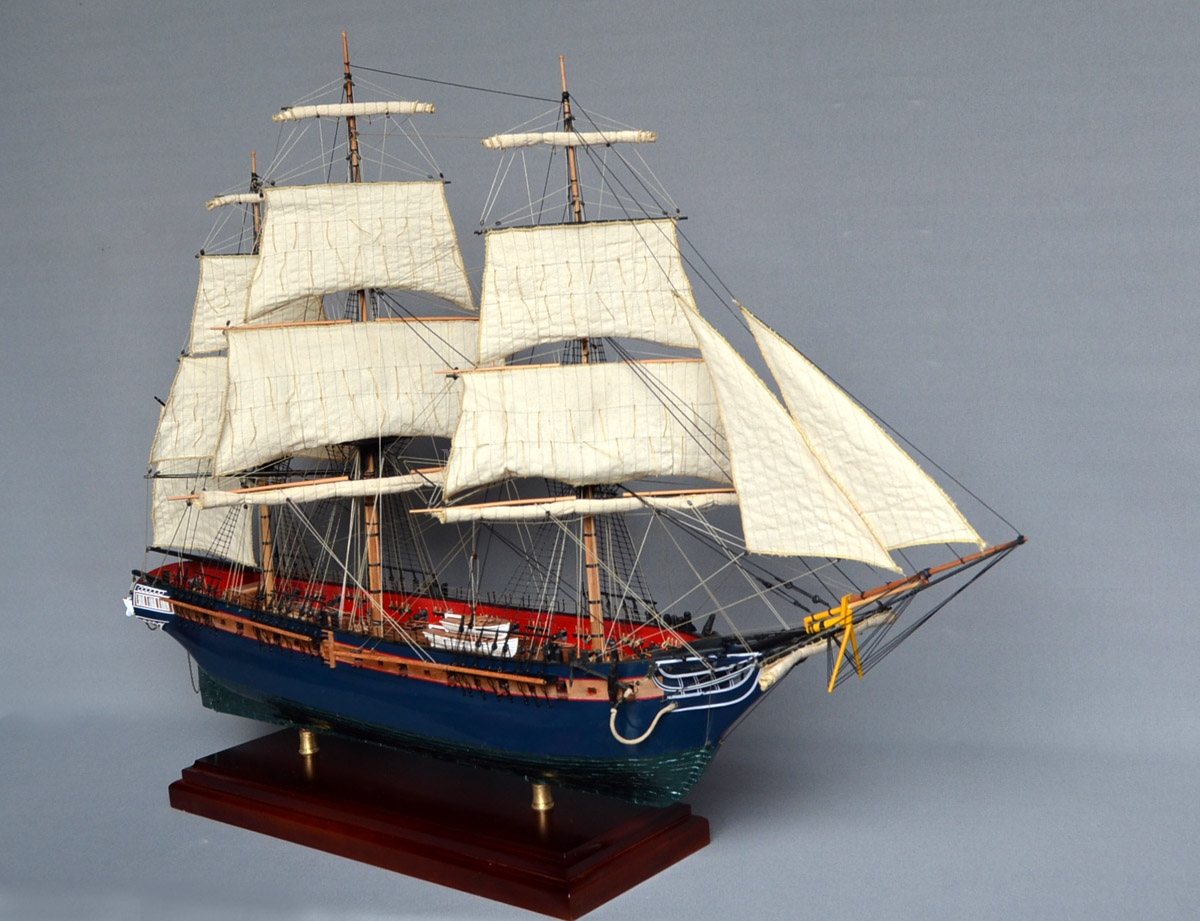
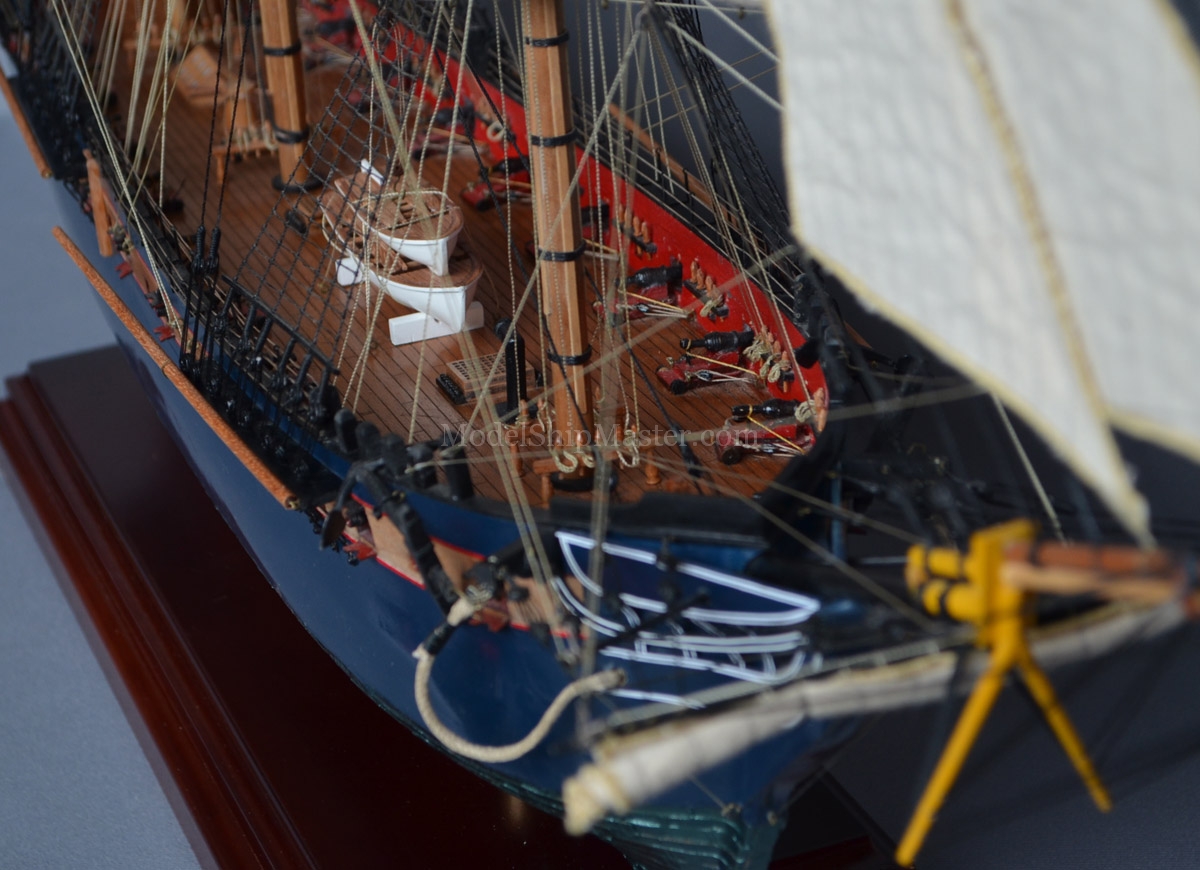
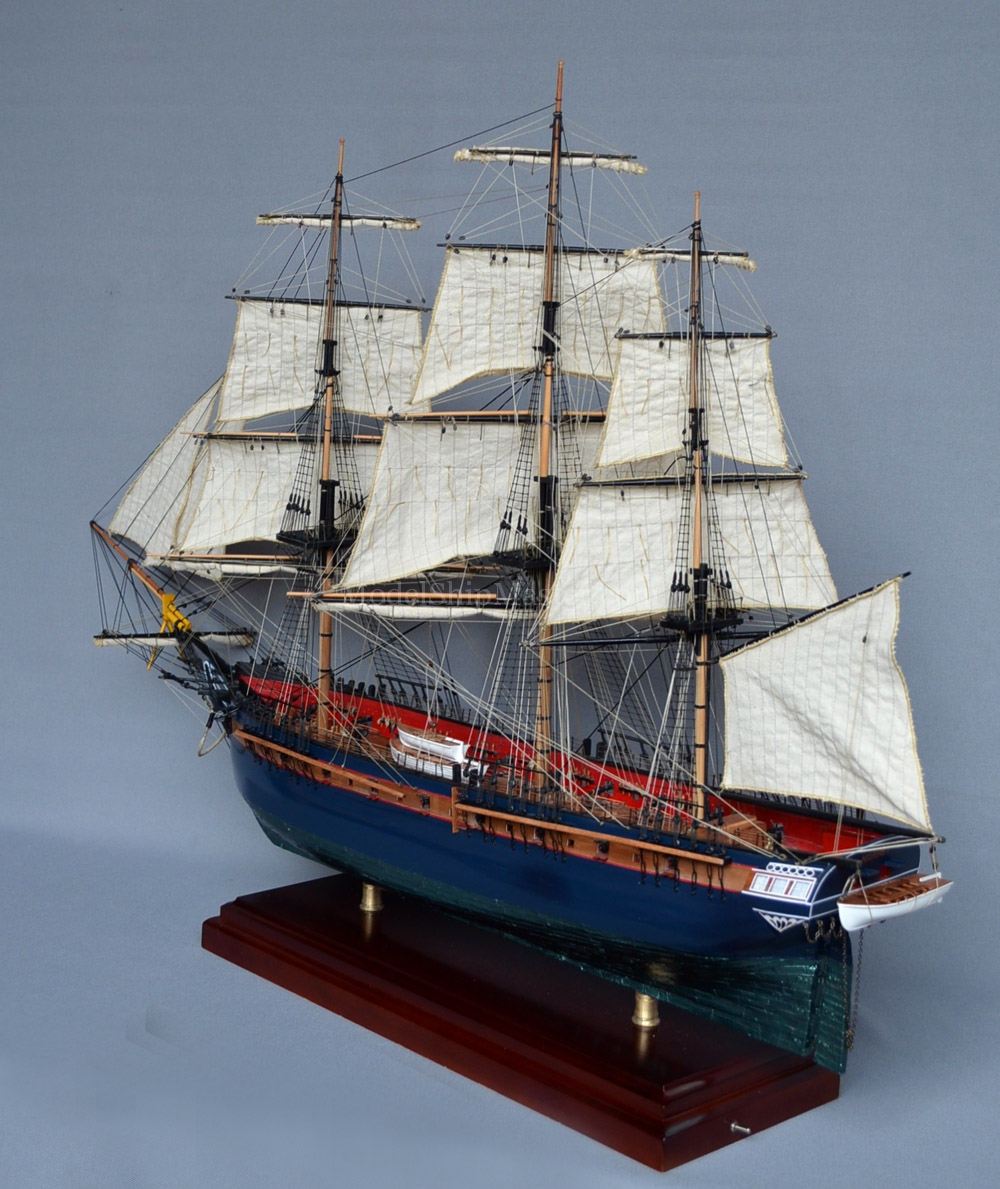
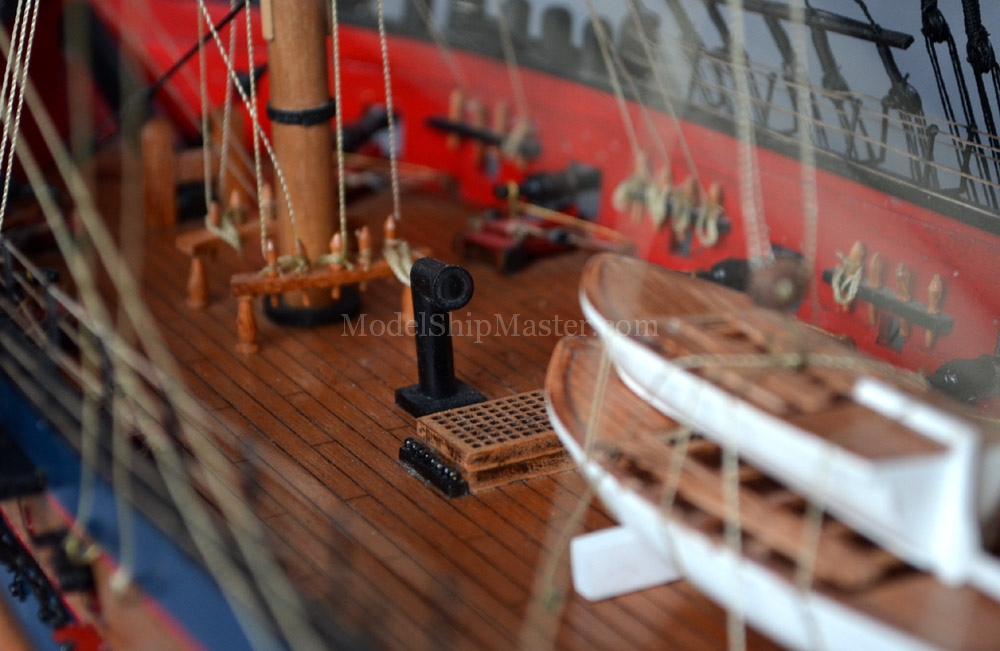
In the
years following the initial Naval buildup in which six
large frigates were built, a series of
cutbacks were made. Instead of a large standing
naval force, President Thomas Jefferson proposed to
build small coastal gunboats that could be manned by
militia forces when needed. And then, in the midst of
the huge naval cutback came an anomaly - an
authorization by Congress to build two 16-gun
brigs--Wasp and Hornet.
The brigs' design
was a compromise between the six original U.S.
frigates and coastal gunboats. The Navy needed a
light-draft ship that was fast and maneuverable, but
also possessing sufficient firepower to deter or defeat
enemy ships. The
Navy had one ship built by a private yard and one by the
Navy in the Washington Navy Yard. The outsourcing went to William Price, a prominent
Baltimore shipbuilder famous for his swift 'Baltimore clippers'.
The brig's
design was attributed to Josiah Fox (1763-1847). Fox was
born in Cornwall UK and completed an apprenticeship at
the Royal Navy Dockyard at Plymouth before emigrating to
the United States in 1794. When the US Navy was created
in that year, Secretary of War Henry Knox sought
recommendations for qualified people to design its
ships. Fox was recommended and he went on to work with Joshua Hunphries to lay down the plans for the now famous six
frigates - Constellation, Constitution, President,
United States, Congress and Chesapeake.
William Price took several
liberties in building Hornet, including a slight
lengthening and narrowing of the hull and reduction of
her draft, among other, making it a little more like his
famous fast Baltimore clippers.
In late 1810, Hornet was upgraded.
Originally built with 18 gun ports, the bulwarks were
rebuilt and the ports shifted to accommodate another
pair, giving her a capacity of 20 guns. A small third or
‘mizzen’ mast was added and she was now no longer a
brig. And to top off the overhaul, she was
armed with 18 thirty-two pounder carronades and
two conventional twelve pounder long
guns. In contrast to her previous armament of
standard nine-pounder conventional
guns totaling 81 lbs in weight of broadside, Hornet now carried firepower that raised her
broadside weight to 302 lbs of iron. Labeled “smashers”
by sailors at the time, these carronades would
show their power in the years to come.
In
1812, at the outbreak of war, USS Hornet sailed under the
command of Master Commandant James Lawrence. It
was Hornet that carried the diplomatic messages from
Britain, notifying the United States that the Royal Navy
would continue impressment of Americans. Lawrence
then sailed Hornet with Commodore John Rodgers' Squadron
on a raiding voyage to South America. It was
during this voyage when the privateer Dolphin was
captured on 9 July 1812 — the
first prize of the war taken by a naval vessel.
On 24 February 1813, Hornet engaged 18-gun HMS Peacock
off Demerary (Guyana). Hornet inflicted heavy
casualties on Peacock and forced her to strike colors. The damage was so great that Peacock sank shortly
thereafter. Captain Peake of Peacock and eight of
her crew were killed in the action, and 27 were wounded;
19 men, who could not be rescued, went down with her
when she sank, but Hornet rescued the rest. Hornet
had only one man killed and two wounded.
Hornet
was then assigned to a squadron consisting of the
frigates USS United States and
USS Macedonian under the command
of Commodore Stephen Decatur. The squadron was
chased into the Thames River near New London,
Connecticut and was blockaded. Hornet was able to
escape and resumed active duty. The other two
ships remained under blockade until the end of the war.
On 14
November 1814, Hornet sailed on a second raiding voyage
to the South Atlantic. On 23 March 1815, she
captured 18-gun HMS Penguin in a short battle off
Tristan da Cunha. This was one of several naval
engagements that took place after the war had ended.
On 27 April, she engaged 74-gun HMS Cornwallis, having
mistakenly identified her as a merchant vessel.
Hornet managed to escape by throwing overboard boats,
guns and other equipment to lighten herself.
Following the war, Hornet captured the pirate schooner
Moscow 29 October 1821 off the coast of Santo Domingo,
in an effort to help end combat in the Caribbean Sea.
She
cruised throughout the Caribbean throughout the 1820s.
In July 1822, Hornet was involved in action against
Captain Paez as part of operations to suppress the
illicit slave trade. She captured this ship and took it
to the Spanish port Havana, Cuba.
On 4
March 1829, Hornet departed Pensacola for the last time,
setting course for the coast of Mexico, and was never
seen again. She was dismasted in a gale off
Tampico on 29 September 1829 and had foundered with the
loss of all hands.
Hornet proved to be one of the most long-lived and
celebrated ships of her day. About her launching,
the Baltimore Evening Sun printed “with a general cheer
the ship met the water and instantly was recognized by
all to be one of the most handsome ships yet to grace
our harbor.”
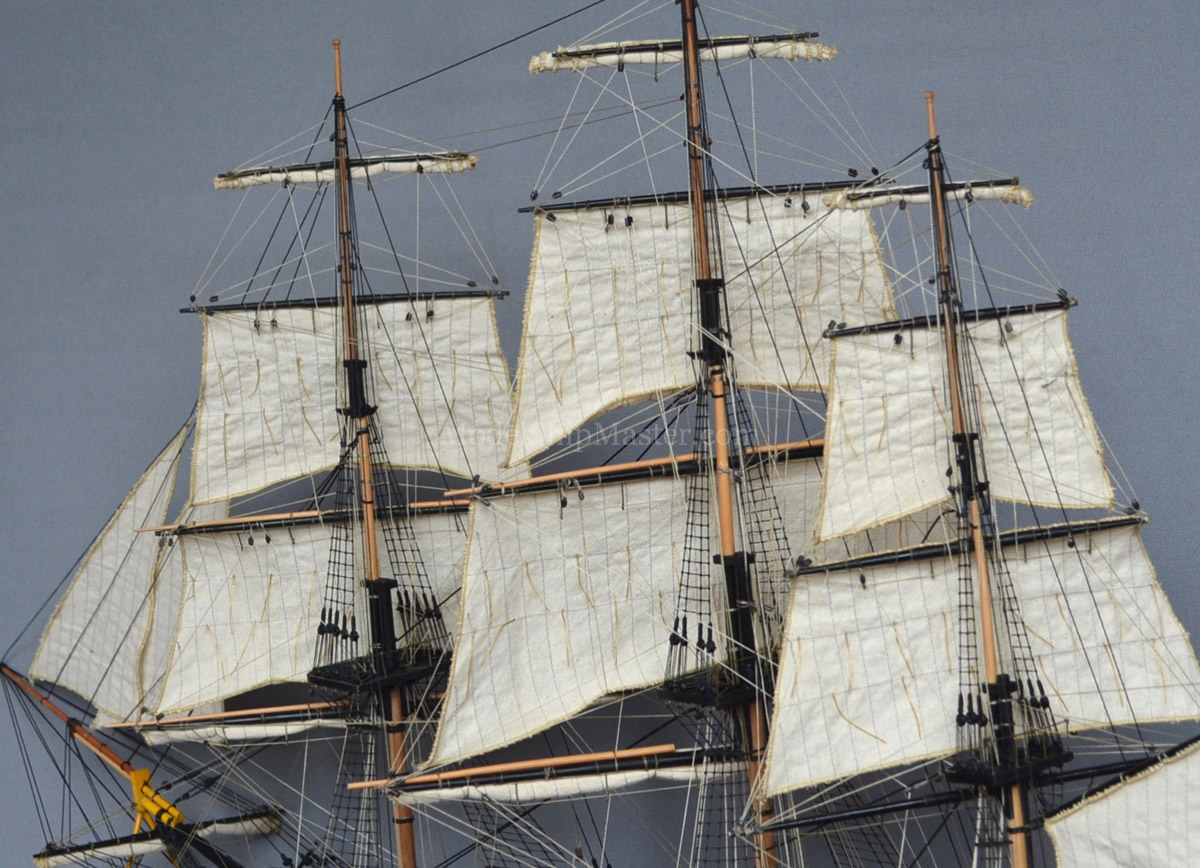
This
primarily wood model of the USS HORNET
features:
-
Superior hollow hull construction
technique
-
Copper-plated bottom, with
individual copper pieces
- Blackened metal
cannons and wooden carriages
37" long x 29" tall x 11"
wide
$4,540 shipping
and insurance in the US included.
Other countries $400 flat rate.
27" long x 21" tall
$3,455 shipping
and insurance in the US included.
Other countries $300 flat rate.
Model is built per commission only. We require only
a small deposit (not full amount, not even half) to start the process.
Click on this link for
lead time.
Illuminate the model in a
special occasion, dimly lit room:
$300 Powered by a
standard 9v battery hidden under the base for your
convenience. This option is only available on the larger
model.
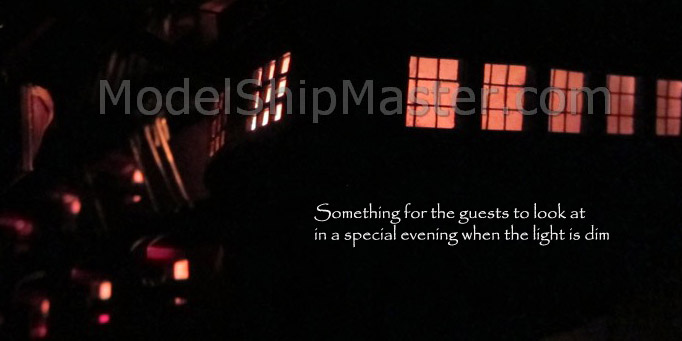
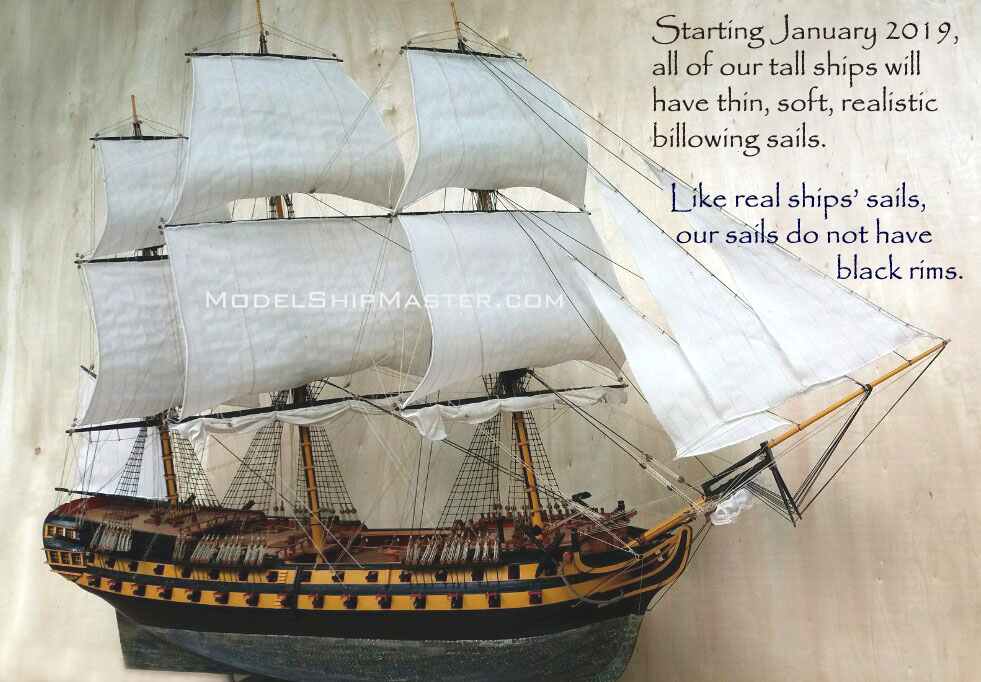
|